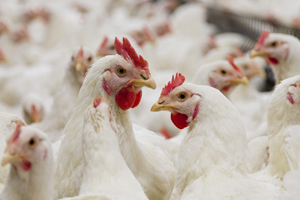New wave of poultry growth possible in Oceania

Strong growth in volume and value terms remains possible in the Australian and New Zealand chicken meat industries, according to Rabobank analysts. Catching the next wave of growth, however, means exploring new opportunities.
Increasing per capita consumption has been a strong driver of growth to date, but this will moderate going forward. Other existing drivers of growth—such as chicken’s low price point, health benefits, wide consumer acceptance and high versatility—are expected to play a smaller role than before. So where will the future growth come from?
Alternative strategies are needed
If the Australian poultry industry embraces change, production could grow from 1.17 million tonnes in 2015 to 1.37 million tonnes in 2021, which equals approximately 687 million birds. New Zealand’s production could increase from 190,000 tonnes in 2014 to 228,000 tonnes in 2021, or approximately 114 million birds.
To achieve this ongoing growth, however, the industry needs to consider alternative strategies. The RaboResearch report Catching the Next Wave of Growth: Growth in Australia and New Zealand Poultry Industries Possible outlines three strategies that support strong growth.
Strategy 1: Developing new markets
Less than 5% of Australia and New Zealand chicken is exported. However, with an ever increasing market of protein consumers located in nearby South-East Asian countries, they need to be considered as potential opportunities for production growth.
Strategy 2: Capturing a larger share of consumer spending
Expanding the product offering, creating higher-value products and targeting higher-price point customers represents a potential new volume and value growth strategy. Value-adding or premiumisation can take a number of forms (many of which are seen in other protein products), examples of which include branding and providence identifiers.
Strategy 3: Improving margins through productivity gains
Adopting new approaches to reduce costs in the supply chain represents a potential new value growth strategy for Australian and New Zealand chicken meat industries. Productivity gains can be achieved through new technology, economies of scale or relocation of operations.
Source: Rabobank













